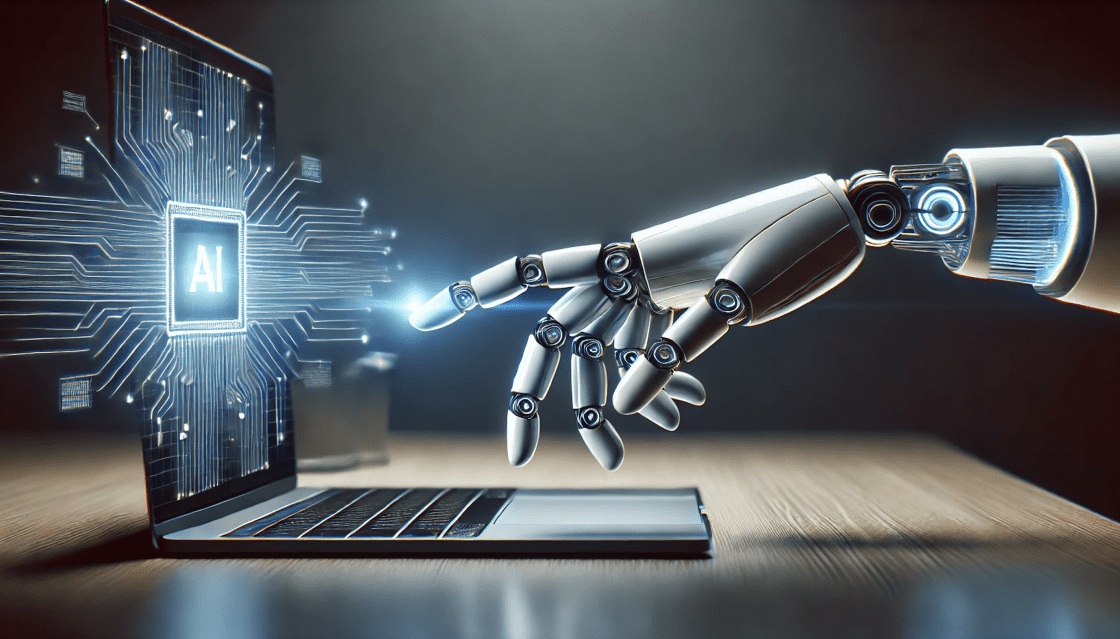In a digital era where automation is king, Google and Anthropic are spearheading a new level of convenience by enabling AI-driven agents to manage routine tasks directly within the browser. Google’s Project Jarvis and Anthropic’s Claude represent a shift from traditional AI functions to advanced “computer use” capabilities that automate tasks like online shopping, form-filling, and booking travel—all based on user commands. These agents work autonomously within digital interfaces, allowing users to experience a more seamless, time-saving web experience.
Here’s a closer look at what these pioneering projects aim to accomplish, how they function technically, and the broader implications of this new technology.
What is Google Project Jarvis, and How Does it Work
Project Jarvis is Google’s ambitious foray into AI-driven web interaction, aimed specifically at Chrome users. Expected for a restricted release in December, Jarvis is powered by the advanced Gemini AI model, optimized to handle diverse browser-based tasks. Its focus on consumer-centric activities like shopping, booking flights, and filling out online forms underscores its role as a digital assistant for personal use. With Jarvis, users can instruct the AI to perform complex, multi-step actions—streamlining their digital experience.
How Project Jarvis Operates: Jarvis uses a layered approach combining visual AI, command recognition, and contextual processing to navigate Chrome with human-like precision. Here’s how it works technically:
- Screen Capture and Analysis:
Jarvis continuously captures and analyzes screenshots of the Chrome interface. These images allow it to “see” what’s on the screen, locate buttons, text fields, and other interactive elements, and determine the correct action. For instance, if instructed to purchase an item, it will identify the relevant “Add to Cart” and “Checkout” buttons. - Sequential Action Processing:
The AI follows a step-by-step action sequence to complete each task, analyzing the screen, performing an action, and verifying its result before moving on to the next. This ensures that Jarvis executes tasks in the correct order, though it introduces a slight delay (currently a few seconds) between steps. - Natural Language Instruction Interpretation:
Users can give Jarvis commands in plain language, such as “Find me a laptop under $800.” Jarvis then translates this command into a structured search process, compares options, and narrows down results based on the user’s specifications. - Data Handling and Entry:
For tasks like filling out forms, Jarvis can retrieve data provided by the user and accurately input it across multiple fields. It performs this task with error-checking to confirm each entry is correct before submission.
Technical Bullet Points for Project Jarvis:
- Uses advanced screenshot capture and visual analysis tailored to the Chrome environment.
- Employs action verification after each step, resulting in a minor processing delay.
- Understands and translates natural language into complex, multi-step actions.
- Limited to Chrome, focusing on consumer tasks (shopping, booking, forms).
- Initial release expected to be exclusive, with a phased rollout for refining functionality.
What is Anthropic Claude, and How Does it Work
Anthropic’s Claude project, specifically the Claude 3.5 Sonnet model, introduces a powerful AI that can manage multi-step tasks not only within browsers but also across diverse applications. Unlike Jarvis, Claude is available in a public beta, giving developers early access to its “computer use” capabilities through the Anthropic API. Claude’s technology allows it to interact with numerous digital interfaces by observing, understanding, and executing commands in complex workflows—making it a versatile tool for both individual and enterprise-level applications.
How Claude Operates: Claude’s method integrates screen perception, decision-making algorithms, and dynamic task interpretation to interact seamlessly with different applications. Here’s how it functions from a technical standpoint:
- Real-Time Screen Interpretation:
Claude constantly interprets screenshots to understand the current screen context, identifying interactive elements like dropdowns, menus, and buttons. This ability lets Claude navigate diverse interfaces with a higher degree of freedom than Jarvis, which is limited to Chrome. - Complex Task Execution with Customizable Workflows:
Claude excels at automating intricate processes that require multiple steps, such as testing applications, gathering analytics, or processing customer requests. It can complete tasks that involve dozens or even hundreds of sequential actions, which are challenging to automate without direct interaction. - Multi-Application Compatibility:
Claude’s design allows it to function across a wide range of applications, from business software to e-commerce platforms. It is not constrained to a single browser, which opens the door for businesses to use it in more specialized workflows, such as software development, customer service, or data entry. - Adaptable Task Memory and Context Awareness:
Claude leverages a short-term “task memory,” enabling it to recall information relevant to a specific task. For example, if it’s filling out forms across multiple pages, Claude remembers data from previous pages to ensure consistent and accurate entries. - API Integration and Developer Customization:
Developers can integrate Claude’s computer-use feature into their own applications through the Anthropic API. This allows businesses to create tailored automation processes, such as customer service workflows or internal software testing, with Claude executing each step autonomously.
Technical Bullet Points for Claude:
- Utilizes real-time screenshot interpretation across multiple applications.
- Capable of handling extensive, multi-step workflows with task memory.
- Integrates with diverse software environments beyond browsers.
- Available as a public beta, encouraging developer experimentation and customization.
- API-based, allowing developers to integrate Claude’s features into proprietary applications.
Comparing Jarvis and Claude: Core Features and Unique Strengths
Although Jarvis and Claude are both pioneers in AI-driven automation, each project brings its unique strengths to the field:
- Platform Focus and Application Scope:
Jarvis is optimized for Chrome, primarily catering to consumer-oriented tasks like online shopping, booking, and form-filling. Claude, meanwhile, has broader compatibility across applications, making it better suited for complex business needs and workflows that span different software. - Task Execution and Responsiveness:
Jarvis processes tasks in a stepwise manner, introducing a few seconds’ delay between actions due to its verification mechanism. Claude, while experimental, often performs faster in long, complex operations thanks to its memory and multi-application flexibility, especially in coding and reasoning-based workflows. - Availability and Developer Access:
Google plans to release Jarvis to a limited testing group, refining its functionality for general users. Claude’s public beta, however, is open to developers, offering customization potential through the Anthropic API, allowing Claude’s capabilities to adapt to specific enterprise needs.
The Rise of AI-Driven Browsing: Agentic AI Models and Digital Assistance
The introduction of AI agents capable of acting independently is transforming how we interact with technology. These “agentic” AIs do more than answer questions; they take on real tasks, operating as autonomous assistants in our digital lives. By making it possible to delegate mundane tasks, these AI agents are setting a new standard for productivity and efficiency in both personal and professional settings.
Benefits of AI-Driven Digital Agents
These agents can dramatically reduce the time and cognitive load involved in routine digital tasks. For example, they can help businesses streamline workflows that require multi-step processes, like managing online orders, filling out insurance forms, or performing software QA tests. Similarly, individual users can benefit from Jarvis’s ability to handle personal errands online, freeing up time for more critical tasks.
Navigating Safety and Ethical Implications
As with all advanced AI systems, the deployment of autonomous browsing tools comes with inherent risks. AI agents capable of acting on a user’s behalf raise concerns around security, privacy, and ethics. Both Google and Anthropic have proactively addressed these challenges, emphasizing security and ethical protocols in their designs.
- Google’s Cautious Release of Jarvis:
Google’s deliberate rollout of Jarvis shows an understanding of the potential risks associated with giving AI autonomy over digital actions. By initially releasing Jarvis to a limited group of testers, Google can ensure that its AI functions safely and effectively before making it widely available. - Anthropic’s Security Measures for Claude:
Claude includes classifiers specifically designed to detect misuse. Anthropic has also worked closely with AI safety organizations to preemptively assess potential risks associated with its “computer use” functionality. These partnerships underscore Anthropic’s dedication to responsible AI, focusing on safe deployment while continuously gathering feedback to improve Claude’s security.
The Future of Digital Interactions: Toward a New Era of Autonomous Browsing
Project Jarvis and Claude provide a glimpse into a future where AI-powered digital agents might handle a wide range of online tasks. The era of fully autonomous digital interactions is in sight, and as Jarvis and Claude advance, they promise to refine and redefine our digital landscapes. These systems represent more than just convenience—they’re steps toward a digital future where AI can shoulder a significant portion of online work, from consumer tasks to complex business processes.
Both Google’s Jarvis and Anthropic’s Claude signify the beginning of a new age in web interaction. Whether it’s the simplicity of automating online shopping or the sophistication of handling multi-application workflows, these digital agents promise to unlock new possibilities in productivity and efficiency for users and organizations alike.


